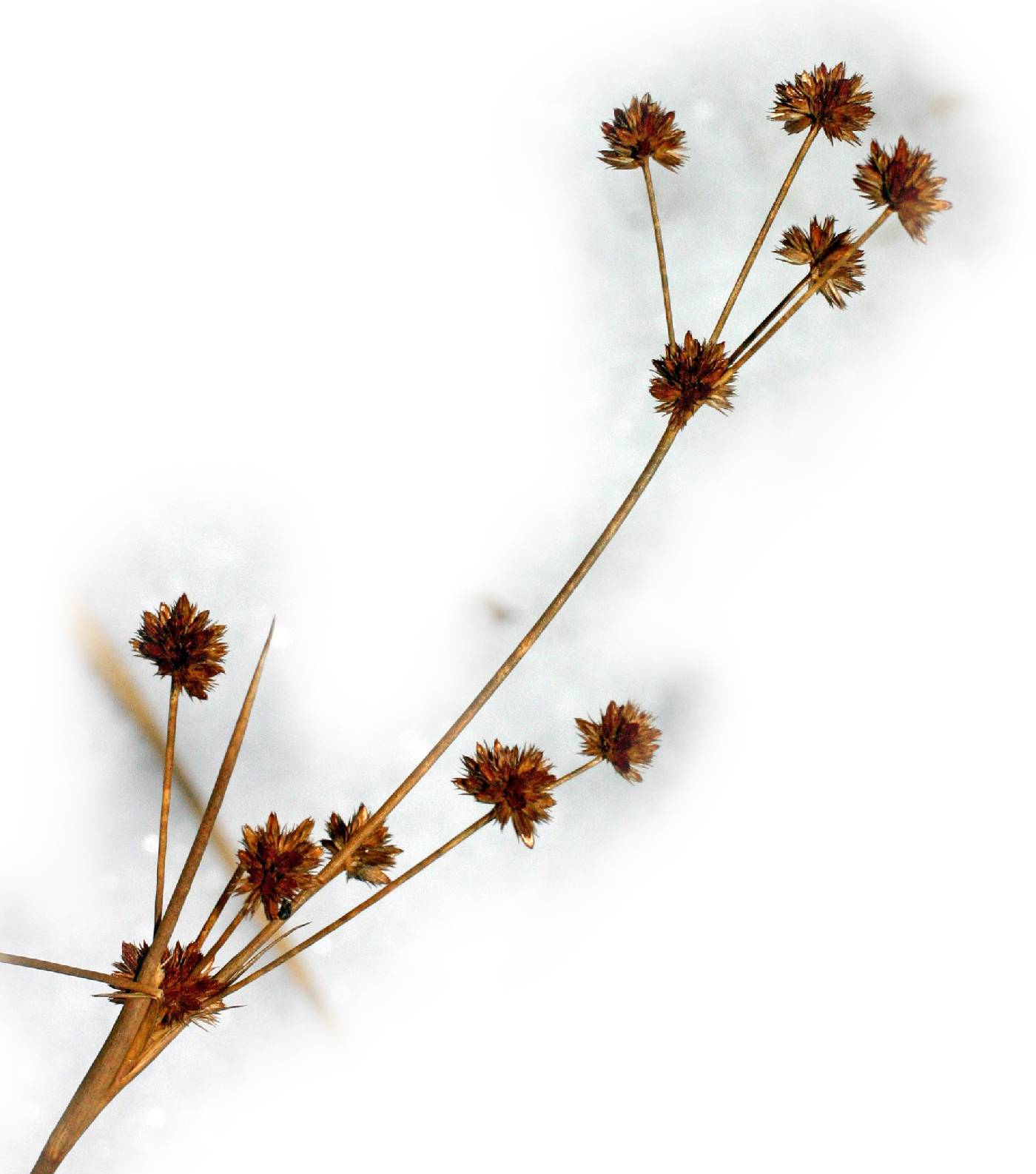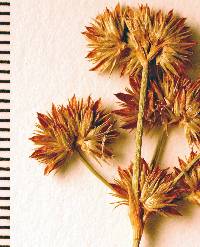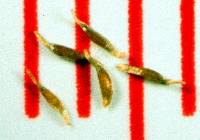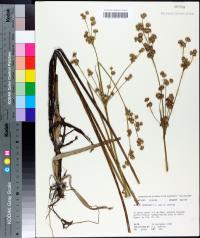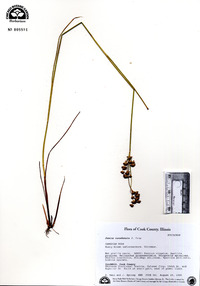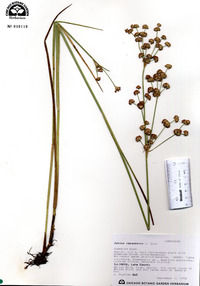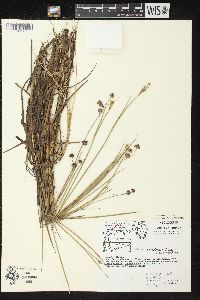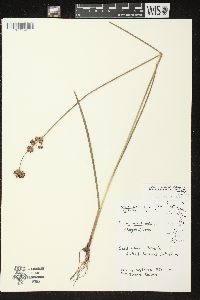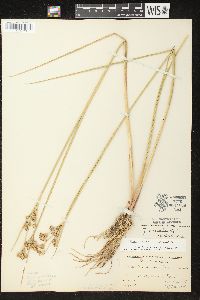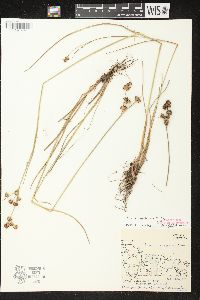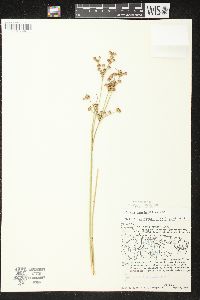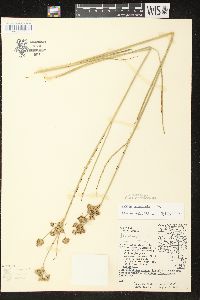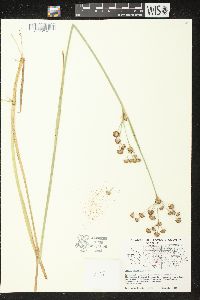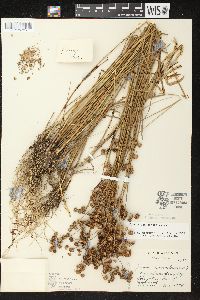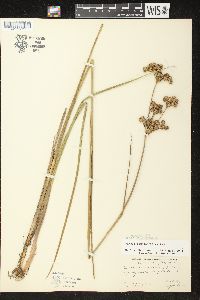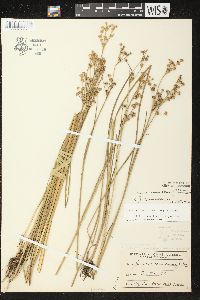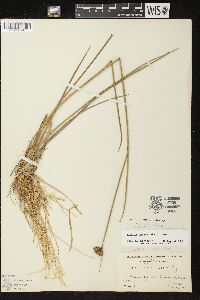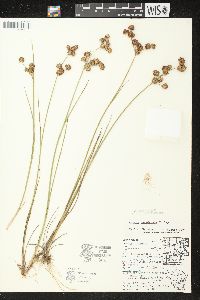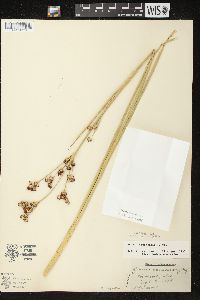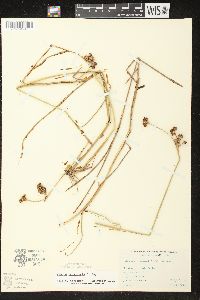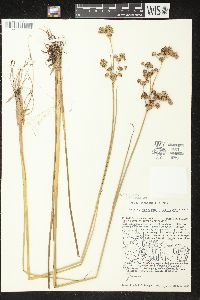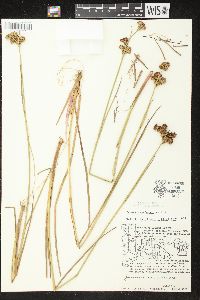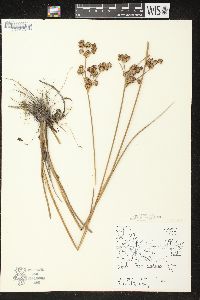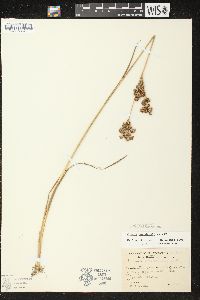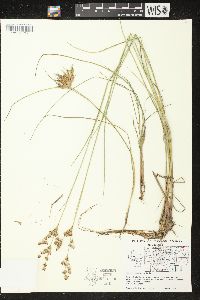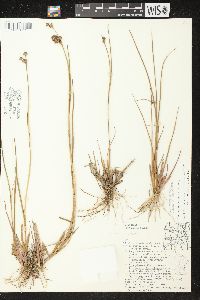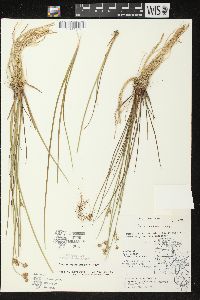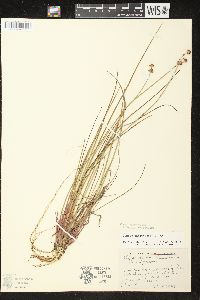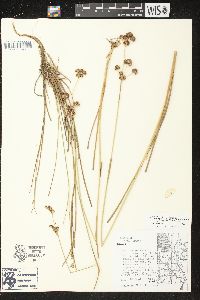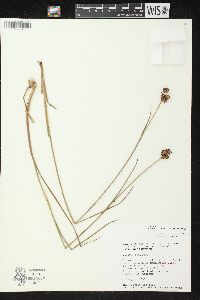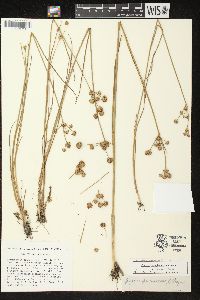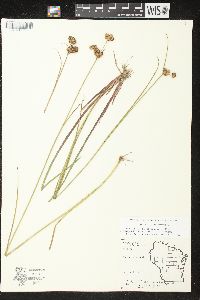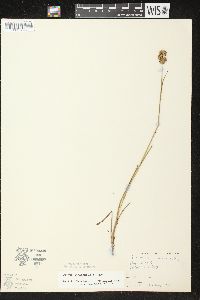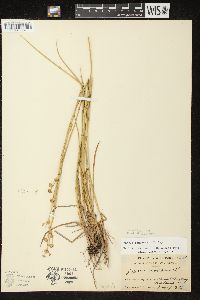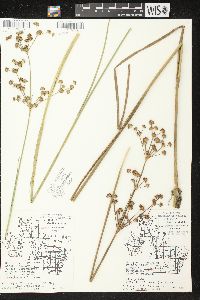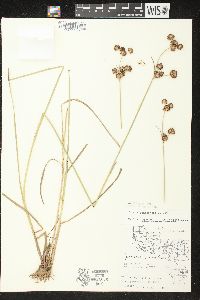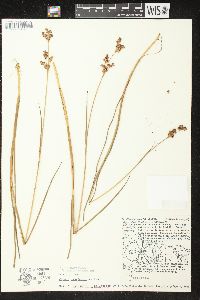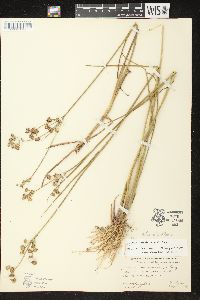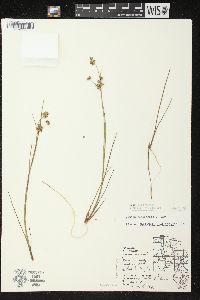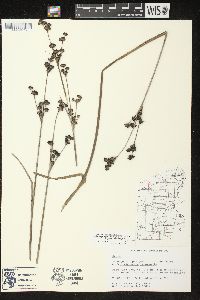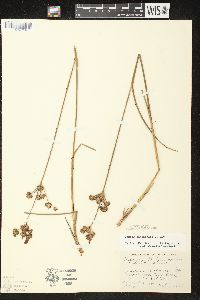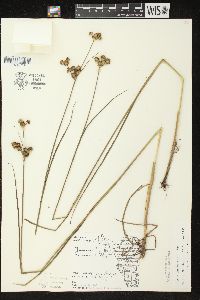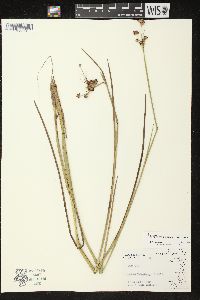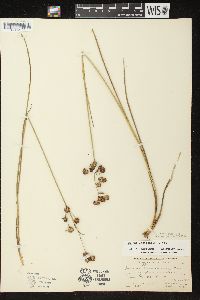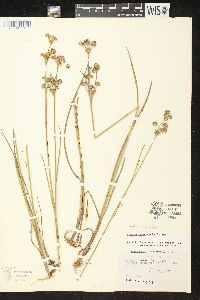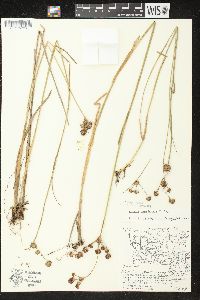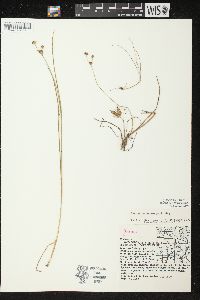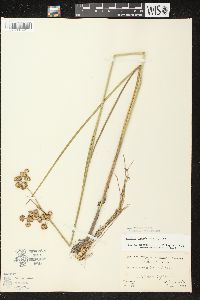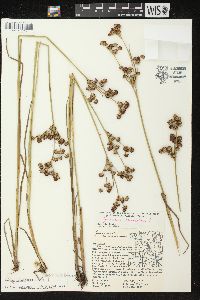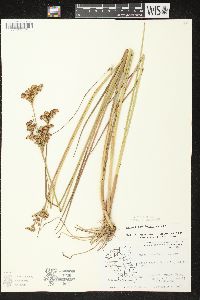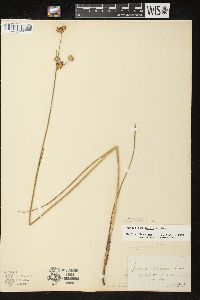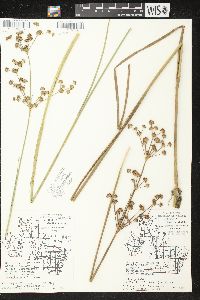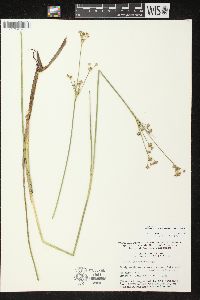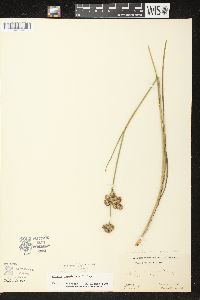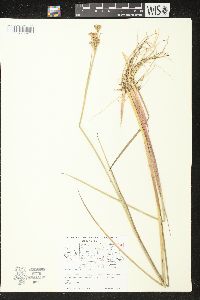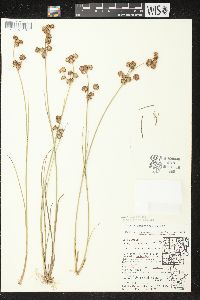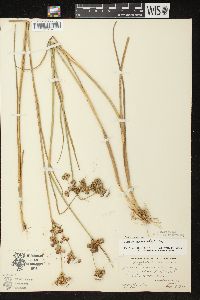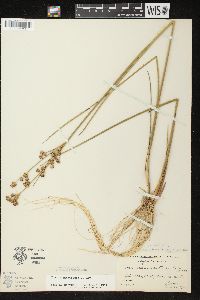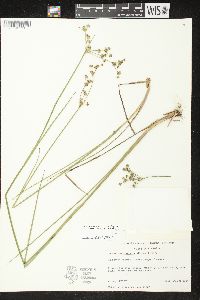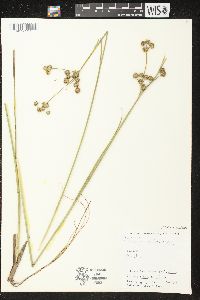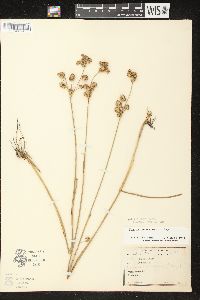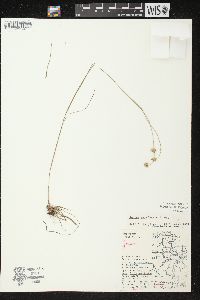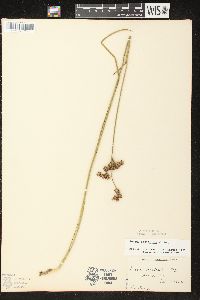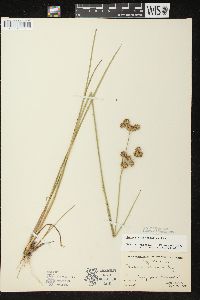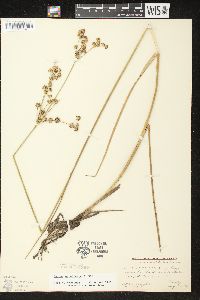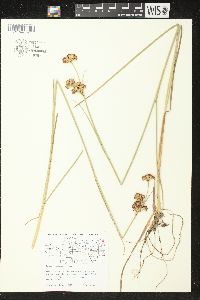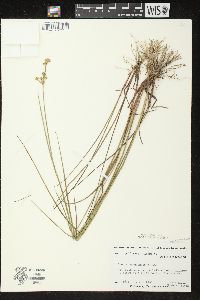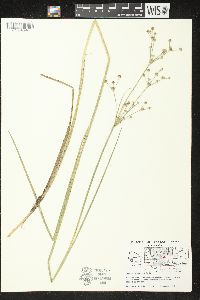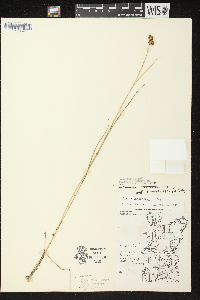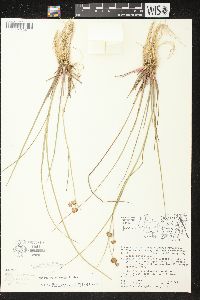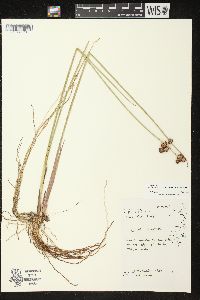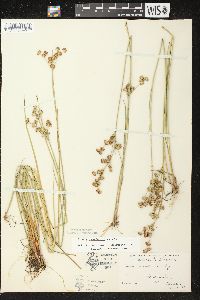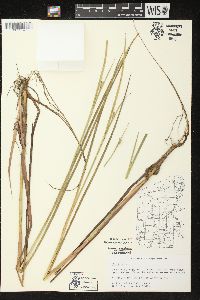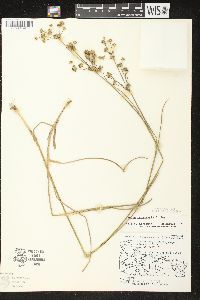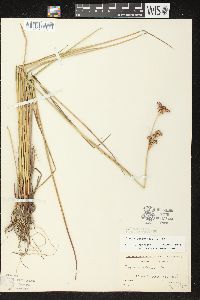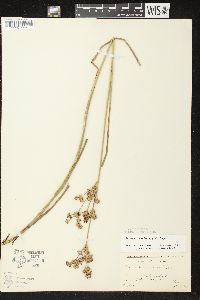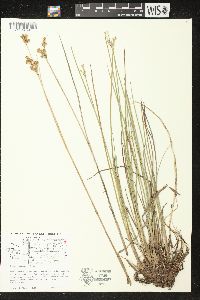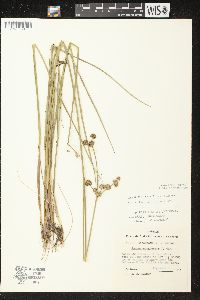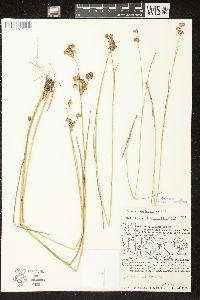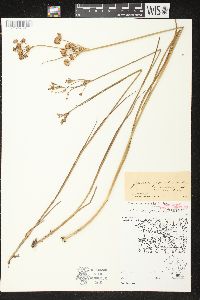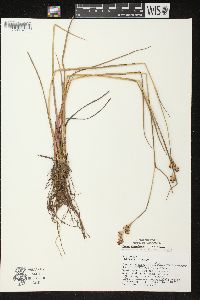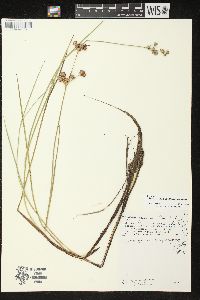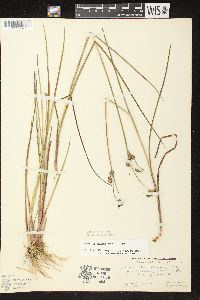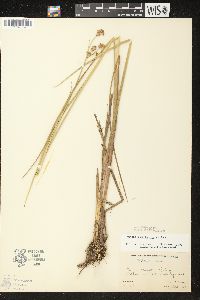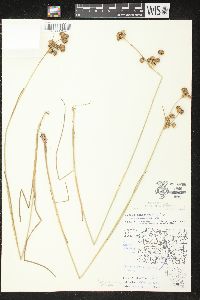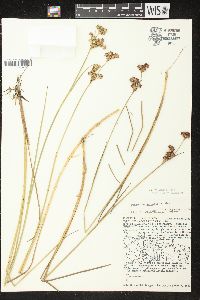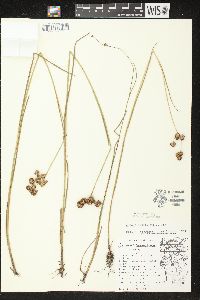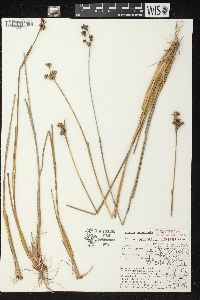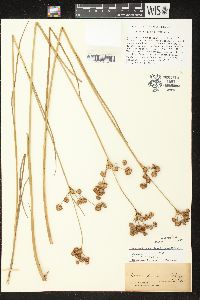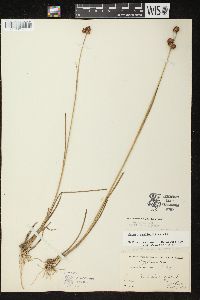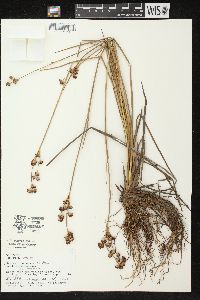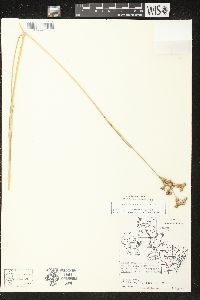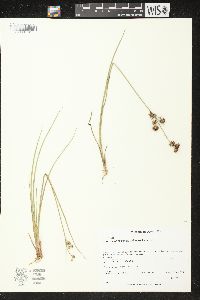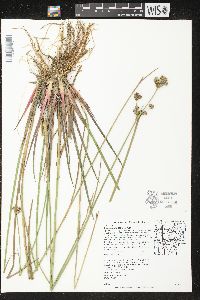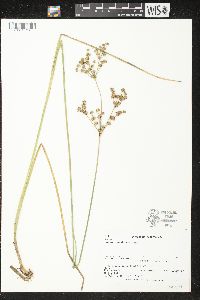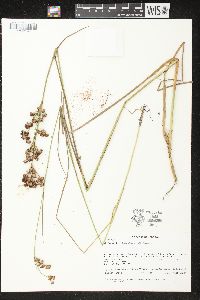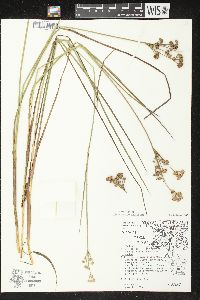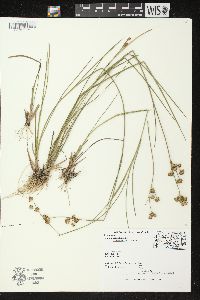
|
|
|
|
Family: Juncaceae
Canadian Rush
[Juncus canadensis f. apertus Fern., moreJuncus canadensis f. conglobatus Fern.] |
Herbs, perennial, cespitose, 3--10 dm. Culms erect, 1--5 mm diam., smooth. Cataphylls 0 or 1--2, straw-colored, apex rounded. Leaves: basal 1, cauline 2--3; auricles 1--1.2 mm, apex rounded, scarious; blade terete, 7--22 cm x 1.2--3 mm. Inflorescences panicles or racemes of 3--50 heads, 2--20 cm, branches erect to ascending; primary bract erect; heads 5--50-flowered, obconic to spheric, 3--10 mm diam. Flowers: tepals green or straw-colored to reddish brown, lanceolate; outer tepals 2.7--3.8 mm, apex acuminate; inner tepals 2.9--4 mm, apex acuminate; stamens 3(--6), anthers 1/2 filament length. Capsules equaling perianth or exserted, chestnut brown, imperfectly 3-locular, lanceoloid, 3.3--4.5 mm, acute proximal to beak, valves separating at dehiscence. Seeds fusiform, 1.1--1.9 mm, tailed; body covered with whitish translucent veil. 2n = 80. Fruiting mid summer--fall. Salt, brackish, and calcareous marshes, acid bogs, roadsides, tidal flats, swamps, patterned fen, lake shores, beaches; 0--200 m; St. Pierre and Miquelon; Man., N.B., Nfld. and Labr. (Nfld.), N.S., Ont., Oreg., P.E.I., Que.; Ala., Ark., Conn., Del., D.C., Fla., Ga., Ill., Ind., Iowa, Ky., La., Maine, Md., Mass., Mich., Minn., Miss., Mo., Nebr., N.H., N.J., N.Y., N.C., Ohio, Pa., R.I., S.C., S.Dak., Tenn., Vt., Va., W.Va., Wis. Two varieties and two forms occurring within the flora have been recognized (M. L. Fernald 1945b). Juncus canadensis var. sparsiflorus has stiffly erect inflorescence branches, and the flowers are generally longer than those of var. canadensis. These varieties simply serve to give name to parts of the broad morphologic range of variation encountered in J. canadensis and do not appear to represent any distinct biological entities. Juncus canadensis and the following three species form a distinctive group: they have ve been variously treated as speecies (as here), varieties of J. canadensis, or as two species, J. canadensis and a polymorphic species, J. brachysephalus, encompassing the other three species (B. Boivin 1967--1979, part IV). Most of the species are easily recognized at their extremes but show a fair amount of overlap.
Perennial grasslike forb 30 cm - 1 m tall Leaves: one basal and two or three alternate on stem, 7 - 22 cm long, 1.2 - 3 mm diameter, linear, grasslike, round in cross section, and with distinct crosswise partitions inside (septate). The leaves also have a thin and papery, basal, 1 - 1.2 mm long, round-tipped, ear-like appendage (auricle) at the top of the leaf sheath. Inflorescence: a terminal, 2 - 20 cm long, tight or open, erect to ascending, branched structure with branches ending in three to fifty, inversely cone-shaped to spheric, 0.3 - 1 cm diameter flower clusters. Each flower cluster is a compact head of five to fifty, tiny, radially symmetric flowers. Stamens: three or sometimes six, with anthers about half the length of the filaments. Pistil: with one superior ovary, and three stigmas. Fruit: somewhat three-chambered, chestnut-brown, about same height as or taller than tepals (3.3 - 4.5 mm), three-angled, lance-shaped, usually pointed-tipped capsules, which open down the sides. Stems: tufted, erect, rigid, smooth, stout, 1 - 5 mm in diameter. Seeds: many, whitish (due to translucent covering), 1.1 - 1.9 mm long, spindle-shaped, narrow but widest at middle with distinctly narrowed tails at the ends. Tepals: six in two whorls of three, green or straw-colored to reddish brown, three-nerved, lance-shaped with tapered, slender tips. While all the tepals are about the same length, the outer three tepals are slightly shorter (2.7 - 3.8 mm) than the inner three tepals (2.9 - 4 mm). Similar species: Juncus canadensis is probably most similar to J. brachycephalus, but that species has smaller seeds (0.8 - 1.2 mm long), and there are usually fewer flowers (under ten) per head. It is possible to mistake J. canadensis with some spherical-headed species with three stamens such as J. brachycarpus, J. acuminatus, and odd plants of J. nodosus, except none of those species have tailed seeds, and their capsules do not extend beyond the tepals. Although J. nodatus can have hemispheric heads and thus appear similar, again its seeds are not tailed, and the capsules do not extend past the tepals in height. Flowering: July to October Habitat and ecology: Common in moist, usually calcareous areas such as pond margins, boggy sites, and low sandy areas close to the water table. Occurence in the Chicago region: native Notes: This species is quite variable and some have previously recognized varieties, but there is little evidence that the differences do not grade into one another across a wide range of features. There is also quite a bit of overlap in characters between J. canadensis and the somewhat similar species of J. brachycephalus, J. subcaudatus, and J. brevicaudatus (Brooks and Clemants 2000). Author: The Field Museum Stems cespitose, stout, rigid, 4-10 dm; lvs erect, terete, septate, 1.5-2.5 mm thick; infl compact to open, 2-20 cm; heads few-many, obpyramidal and 5-10-fld to globose and 50-fld, fls eprophyllate; tep lance-subulate, 3-nerved, the sep 2.7-3.8 mm, the pet very slightly longer; stamens 3 or sometimes 6; fr trigonously prismatic or subtriquetrous, 3.3-4.5 mm, abruptly narrowed to a short beak, subtrilocular, the partitions incomplete distally; seeds slenderly fusiform, 1.2-1.9 mm, the slender whitish appendages constituting more than half the length; 2n=80. Swamps, marshes, and wet shores; Que. and N.S. to Minn., s. to S.C., Ind., Neb., and reputedly La. Gleason, Henry A. & Cronquist, Arthur J. 1991. Manual of vascular plants of northeastern United States and adjacent Canada. lxxv + 910 pp. ©The New York Botanical Garden. All rights reserved. Used by permission. From Flora of Indiana (1940) by Charles C. Deam Very common in the lake area but infrequent south of it. It is found in marshes, swales, bogs, sandy or marly ditches, and on low borders or sandy shores of lakes. …… Indiana Coefficient of Conservatism: C = 7 Wetland Indicator Status: OBL |

